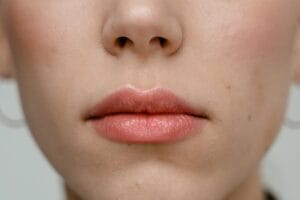Why Your Nose Tip Drops After Rhinoplasty (And What You Can Do About It)
Sarah noticed it about six months post-surgery. Her nose looked perfect initially—that refined, lifted tip her surgeon had promised. But then, gradually, something changed. She saw nose tip drop after rhinoplasty. The tip started drifting downward, not dramatically, but enough that she found herself studying her reflection, comparing photos, wondering if something had gone wrong.
She’s not alone. This phenomenon, which clinicians call nasal tip drop or tip ptosis after rhinoplasty, happens more often than patients realize. But here’s what many people don’t understand: sometimes it’s completely normal. Other times, it signals a problem that needs attention.
Understanding why nose tip drop occurs after rhinoplasty matters because it helps you recognize when to worry and when to wait. It also sets realistic expectations about what this surgery can achieve—and how results evolve over time. In this guide, we’ll break down the science behind tip drooping, separate normal healing from potential complications, and explore what you can do if your nose tip doesn’t hold its position.
Question: What causes nose tip drop after rhinoplasty?
Answer: Nose tip drop after rhinoplasty occurs due to several factors: gravity and healing forces as swelling subsides, insufficient cartilage support from weak or poorly positioned grafts, soft tissue changes including scar tissue formation, and surgical technique factors. Some tip settling (1-2mm) is normal, but significant drops may require revision surgery to strengthen structural support.

What Causes Nose Tip Drop After Rhinoplasty?
The nasal tip dropping after rhinoplasty isn’t one single issue—it’s actually several potential problems converging. Here’s where things get interesting: your nose tip sits where it does because of an intricate balance between cartilage, soft tissue, and the forces of gravity and healing.
Gravity and Healing Forces
Right after surgery, everything is propped up. Swelling masks the true position of your tip, and internal sutures and grafts are still holding everything in place with maximum tension. But as that swelling subsides—a process that takes months, sometimes over a year—gravity starts doing what gravity does. The skin envelope shrinks back down, and without adequate structural support, that tip can drift downward.
In my practice, I’ve observed that patients with thicker skin tend to experience more tip drop. The weight of that tissue creates a constant downward pull. Thin-skinned individuals often hold their tip position better, though they may face different aesthetic challenges.
Insufficient Cartilage Support for Nose Tip Drop after Rhinoplasty
Here’s the key thing most people don’t realize: your surgeon needs to build structure that lasts. Temporary supports might look great at week two, but they won’t hold up over time. When cartilage grafts aren’t strong enough, or when they’re positioned incorrectly, they can settle, shift, or even resorb slightly. That means less support for your tip, which equals more drooping.
Columellar struts—the vertical supports placed between your nostrils—are particularly crucial. If this graft is too weak, too short, or placed incorrectly, tip drop is almost inevitable. Same goes for tip grafts, those small pieces of cartilage that refine and support the nasal tip structure.
Soft Tissue Changes
Your body’s healing response plays a bigger role than many realize. Scar tissue formation, a process called fibrosis, can actually pull structures downward over time. Meanwhile, the natural relaxation of ligaments and tissues that were tightened during surgery can allow the tip to settle lower than intended.
This aspect is often overlooked, but it’s significant. Those connective tissues between your upper and lower lateral cartilages? They heal with varying amounts of tension. Too much laxity, and you get tip drop. Too much tightness, and you might get a different problem entirely.
Surgical Technique Factors
Some surgical approaches carry higher risks of tip drop. Open rhinoplasty techniques generally offer better long-term tip support because surgeons have more direct access to place stronger, more secure grafts. Closed techniques can work beautifully, but they require exceptional precision—and sometimes, when that precision isn’t achieved, support weakens over time.
That said, technique alone doesn’t guarantee results. I’ve seen patients with technically perfect surgeries still experience some tip settling. And I’ve seen patients with less-than-perfect techniques whose noses held beautifully. Individual anatomy matters tremendously here.
When Does Nose Tip Drop Typically Occur?
Timeline matters when evaluating tip drop. Here’s what’s normal versus what might signal trouble.
Early Post-Operative Period (0-3 Months)
During the first few months, you’re dealing with significant swelling. A drooping appearance at this stage often isn’t actual tip drop—it’s swelling distorting perception. The tip might look lower because surrounding areas are swollen and puffy, creating an optical illusion.
But there’s a catch: if you notice the tip dropping rapidly during this early phase, it could indicate graft failure or suture problems. That’s worth mentioning to your surgeon immediately.
Intermediate Phase (3-12 Months)
This is when real tip drop typically becomes apparent. Swelling has diminished enough that you can see actual structural position. Most patients who experience tip drop notice it between months three and six, though it can continue evolving through the first year.
This gradual settling is often just part of normal healing. Tissues relax. Swelling continues to resolve subtly. Grafts settle into their final positions. Some degree of settling—maybe 1-2 millimeters—is normal and expected. But more significant drops, especially those that continue beyond six months, warrant evaluation.
Long-Term Changes (12+ Months)
After a year, most healing is complete. But tip position can still change slightly as your nose fully matures post-surgery. However, any noticeable drooping that starts or continues well after the one-year mark is less likely to be normal settling and more likely to indicate a structural issue.
This is where patients often get confused. They think their result should be locked in at six months, but noses continue evolving. That said, dramatic changes after a year typically need professional assessment.
How Much Tip Drop is Normal After Rhinoplasty?
So you’ve noticed some drooping—but is it within normal range? This is where patients need realistic expectations.
A millimeter or two of tip drop is generally considered acceptable and even expected. When we’re talking about tip position, those small movements can look more significant than they are. Think about it: a 2mm change in tip position can shift your entire nose’s appearance, but it might still fall within what surgeons call a “good result.”
On the other hand, tip drops of 3-5 millimeters or more—especially when they’re noticeable to you and others—typically indicate a problem. If your tip is drooping significantly enough that your nose looks different from what you and your surgeon discussed, that’s worth addressing.
Here’s what many patients find surprising: some tip drop can actually be beneficial. An initially over-rotated tip (one that’s too high) settling into a more natural position often creates a better final result. The challenge is distinguishing between helpful settling and problematic drooping.
Signs Your Tip Drop May Be a Problem
Not all tip drop is created equal. Here are red flags that suggest you might need intervention:
Continuous Drooping Over Time
If your tip keeps moving downward month after month, especially beyond the six-month mark, that’s a concern. Normal settling happens, then stabilizes. Continuous movement suggests insufficient support.
Significant Visual Change
When friends or family notice the change without you mentioning it, that’s usually a sign the drop is substantial. Subjective concerns are valid, but objective visual changes carry more clinical significance.
Functional Issues
Tip drop that’s severe enough to cause breathing problems—collapsing nostrils, nasal obstruction—definitely needs attention. This suggests the structural support of your nasal valves has been compromised.
Asymmetry Development
If your tip is dropping more on one side than the other, creating noticeable asymmetry, that often indicates a graft or suture problem on that side.
Patient Dissatisfaction (Validated by Surgeon)
Sometimes the issue isn’t dramatic, but it bothers you enough to affect your satisfaction with results. If your surgeon agrees the drop exceeds what’s typical, that’s a legitimate reason to explore solutions.
Treatment Options for Nose Tip Drop After Rhinoplasty
If your tip has dropped more than you’re comfortable with, you have options. The right approach depends on timing, severity, and what caused the problem.
Non-Surgical Interventions
For minor tip drops—those 1-2 millimeter changes that are more aesthetic concerns than structural failures—non-surgical options sometimes work. Injectable fillers can add subtle support and projection, essentially propping the tip up slightly. This isn’t a permanent solution, but it can be enough for patients who are otherwise happy with their results.
The catch? These injections need careful placement. Done incorrectly, they can distort the nose or create other aesthetic problems. And they’re temporary—typically lasting 6-12 months before requiring touch-ups.
Revision Rhinoplasty
When tip drop is significant or continuing, revision surgery is usually the most reliable solution. This isn’t a simple fix, though. Revision rhinoplasty is more complex than primary surgery because you’re working with altered anatomy, existing scar tissue, and potentially limited graft material.
During revision, surgeons typically:
- Strengthen or replace columellar struts
- Add or reposition tip grafts for better support
- Tighten or reconstruct supportive ligaments
- Use stronger graft materials if initial ones were too weak
The timing matters here. Most surgeons prefer waiting at least 12 months after your original surgery before performing revision. This ensures all swelling has resolved and you’re seeing your true result. Rushing into revision before your nose has fully healed can lead to worse outcomes.
What to Expect During Revision
Revision surgery is more involved than most patients expect. You’ll likely need another open rhinoplasty approach to properly access and repair structures. Recovery follows a similar timeline to your original surgery—about two weeks of significant downtime, then months of gradual healing.
Success rates vary. Patients with minor to moderate tip drops often see good improvements. Those with severe drops or multiple previous surgeries face more challenges. But even in complex cases, skilled revision surgeons can often significantly improve tip position and support.
How to Prevent Nose Tip Drop After Rhinoplasty
Prevention beats correction every time. While you can’t control everything, understanding what contributes to good outcomes helps you partner with your surgeon effectively.
Choosing the Right Surgeon for Nose Tip Drop
This is probably the most critical factor. Surgeons with extensive rhinoplasty experience understand tip support mechanics deeply. They know how to build structures that last, which grafts work best, and how to avoid common pitfalls.
Look for board certification in plastic surgery or facial plastic surgery. Review before-and-after photos, specifically looking at results at 12+ months post-op (not just fresh results). Ask how many rhinoplasties they perform annually—volume often correlates with expertise.
Clear Pre-Operative Communication
Make sure you and your surgeon align on goals. If you want a significantly higher tip, discuss whether that’s realistic for your anatomy. Thick skin, weak cartilage, and other factors limit what’s achievable. Unrealistic expectations set you up for disappointment.
Also, ask about tip drop rates in their practice. Every surgeon has patients who experience some settling—that’s reality. But understanding their approach to prevention and management helps you make informed decisions.
Proper Post-Operative Care
While you can’t prevent tip drop through aftercare alone, following your surgeon’s instructions supports optimal healing. Avoid trauma to your nose. Don’t wear glasses that rest on your nasal bridge until cleared (usually 6-8 weeks). Protect your nose from sun exposure, which can affect healing.
Some surgeons recommend taping or splinting techniques during early healing. These aren’t proven to prevent tip drop, but they support tissues during critical healing phases. Follow whatever protocol your surgeon recommends.
Realistic Expectations About Rhinoplasty Results
Here’s something many patients don’t realize: perfect tip position that never changes isn’t always the goal. Or even achievable.
Your nose is living tissue, not a sculpture. It responds to gravity, aging, and healing processes. Even well-supported tips can settle slightly over time. What matters is whether that settling stays within acceptable parameters and whether you’re happy with your overall result.
A nose that looks natural, functions well, and complements your face—even with a millimeter or two of settling—is often a better outcome than an over-supported tip that looks rigid or unnatural. The key is finding that balance with your surgeon.
When to Consult Your Surgeon About Tip Drop
Timing your concerns appropriately helps everyone involved. Here’s when to reach out:
- Early (0-3 months): Only if you notice rapid, significant changes or have concerns about graft failure. Otherwise, wait—swelling makes evaluation difficult.
- Intermediate (3-12 months): This is when most tip drop becomes apparent. If you’re concerned, schedule a follow-up. Your surgeon can evaluate whether changes are within normal range.
- Long-term (12+ months): Any new or continuing drooping after a year warrants evaluation. At this point, your result should be relatively stable.
Bring photos showing the progression if you have them. Your surgeon can compare your current appearance to earlier healing stages, which helps distinguish normal settling from problematic drop.
The Bottom Line on Nose Tip Drop after Rhinoplasty
Nose tip drop after rhinoplasty is complex. Sometimes it’s normal healing. Sometimes it’s a sign something needs attention. Understanding the difference—and having realistic expectations about what’s achievable—helps you navigate this journey with confidence.
Remember, your nose continues evolving for months after surgery. Some settling is expected. What matters is the final result: a nose that looks natural, functions well, and makes you feel confident. If tip drop becomes significant enough to compromise that outcome, revision surgery can often help. But often, patients find that initial concerns about minor settling resolve as they adjust to their new appearance.
The key is patience during healing, clear communication with your surgeon, and realistic expectations about what rhinoplasty can achieve. Your nose will settle—but with proper surgical technique and adequate support structures, it should settle into a position you’re happy with long-term.
Key Takeaways: Nose Tip Drop after Rhinoplasty
- Some degree of tip settling (1-2mm) is normal and expected during rhinoplasty healing
- Most tip drop becomes apparent between 3-12 months post-surgery, with continued changes after a year warranting evaluation
- Multiple factors contribute to tip drop including gravity, insufficient cartilage support, soft tissue changes, and surgical technique
- Significant drops (3mm+) or continuous drooping beyond 6 months likely indicate a problem needing attention
- Revision rhinoplasty can often correct problematic tip drop, but prevention through proper surgical technique is ideal
- Clear communication with your surgeon and realistic expectations help ensure satisfactory long-term results













